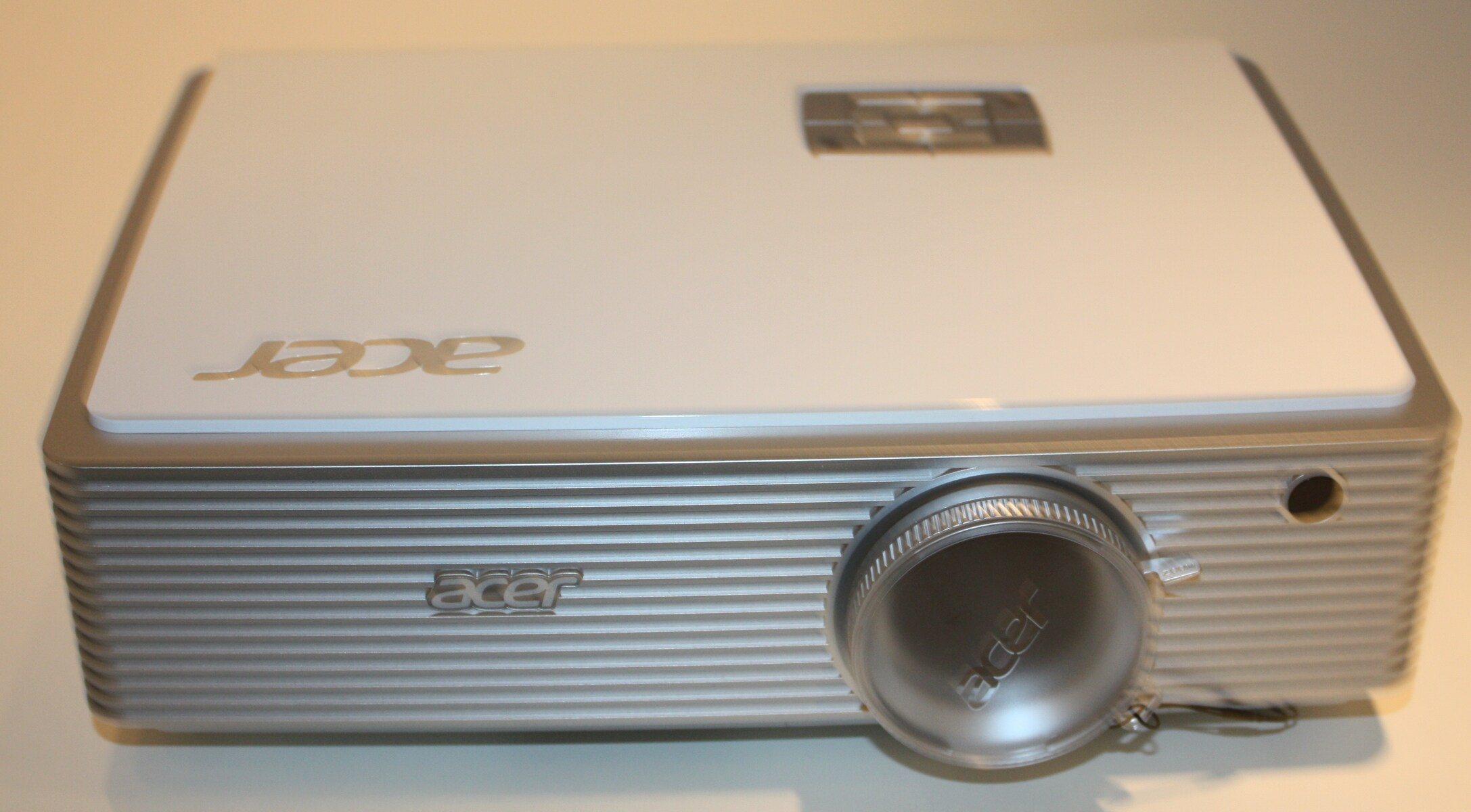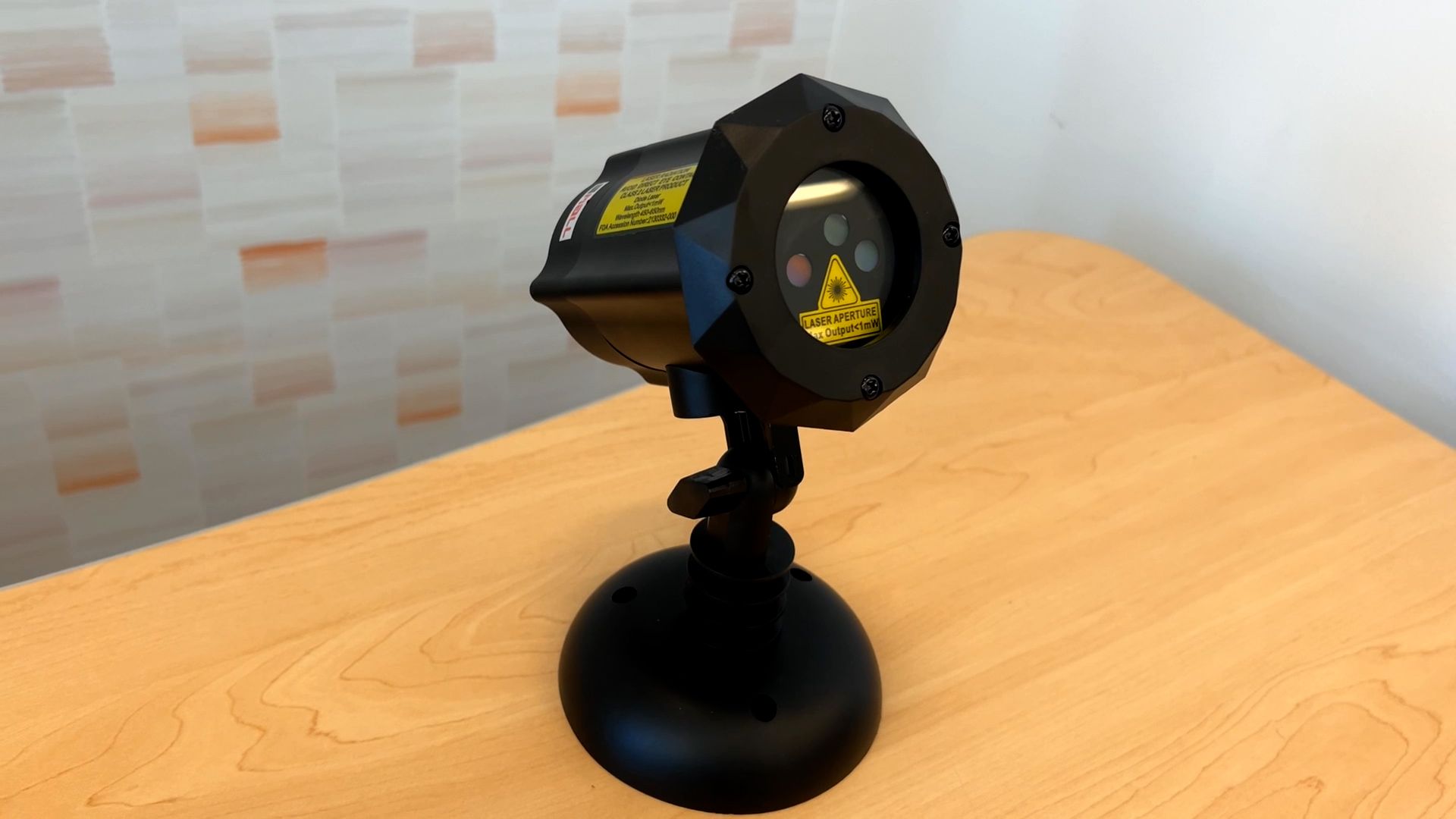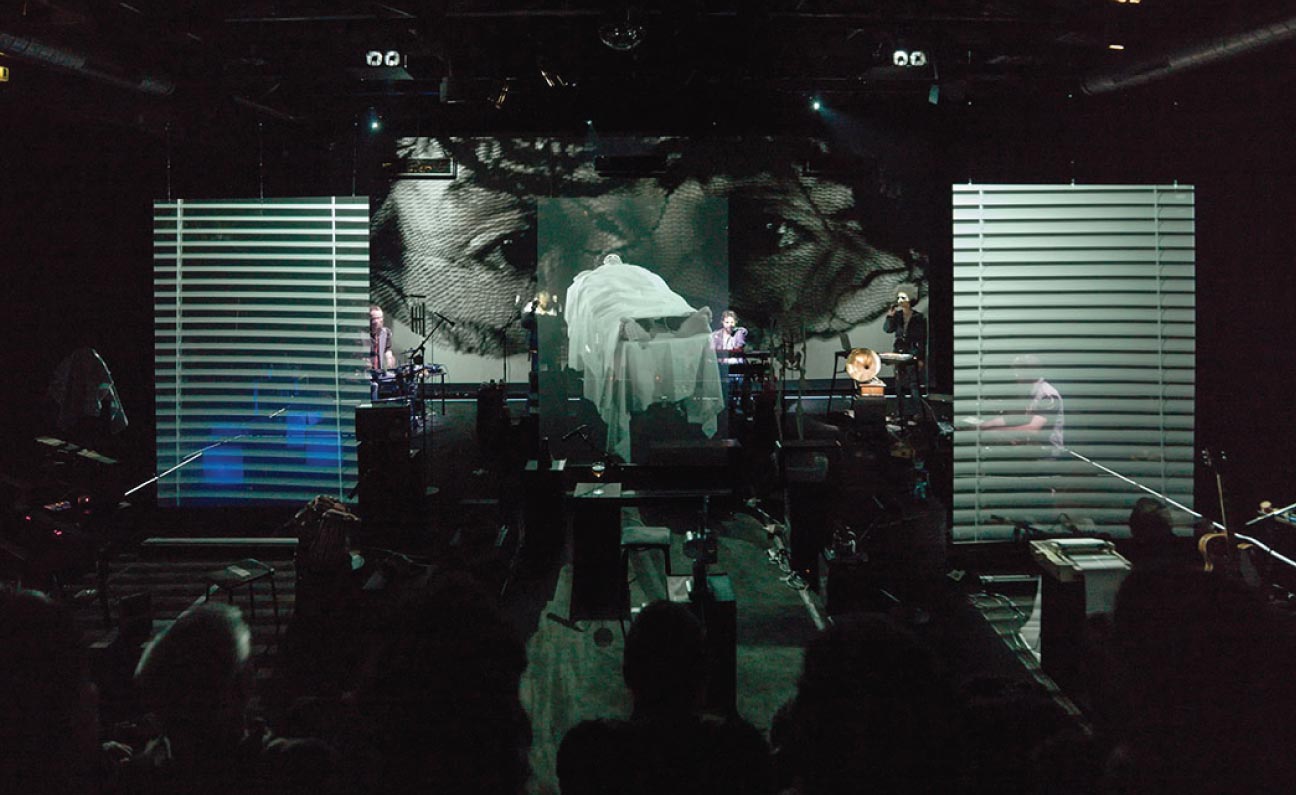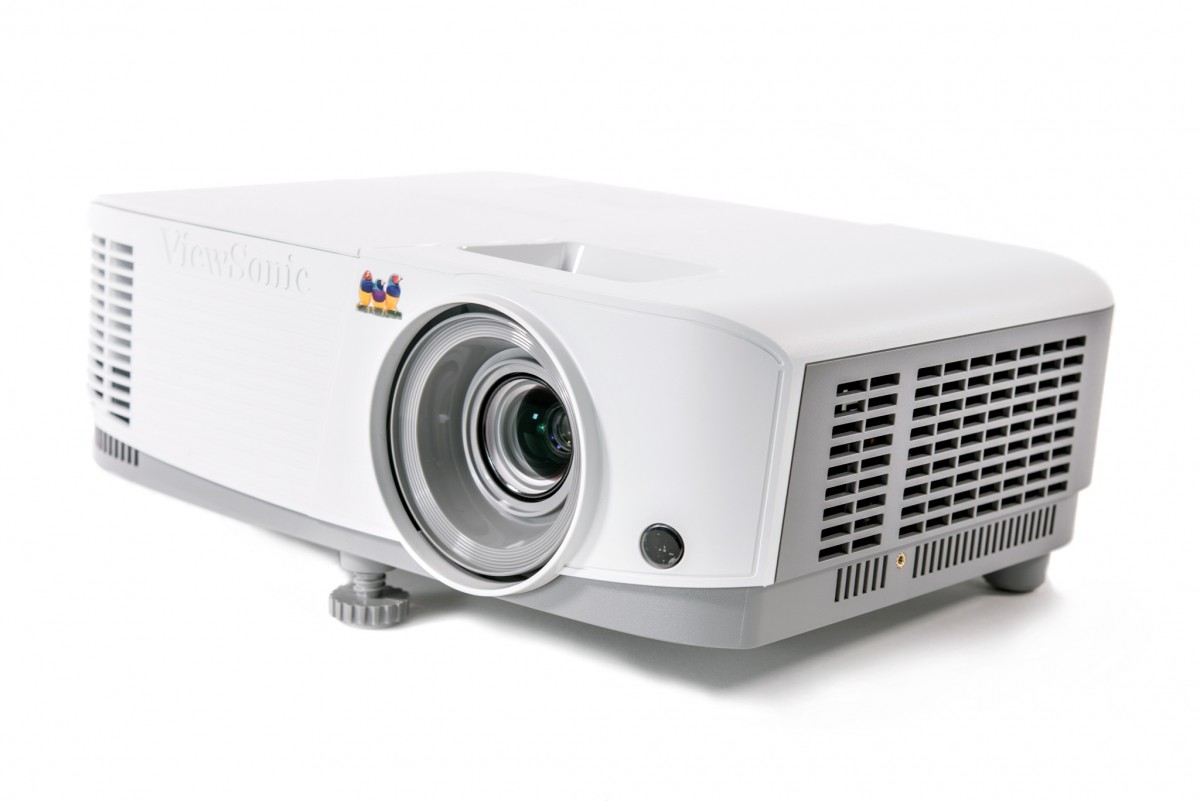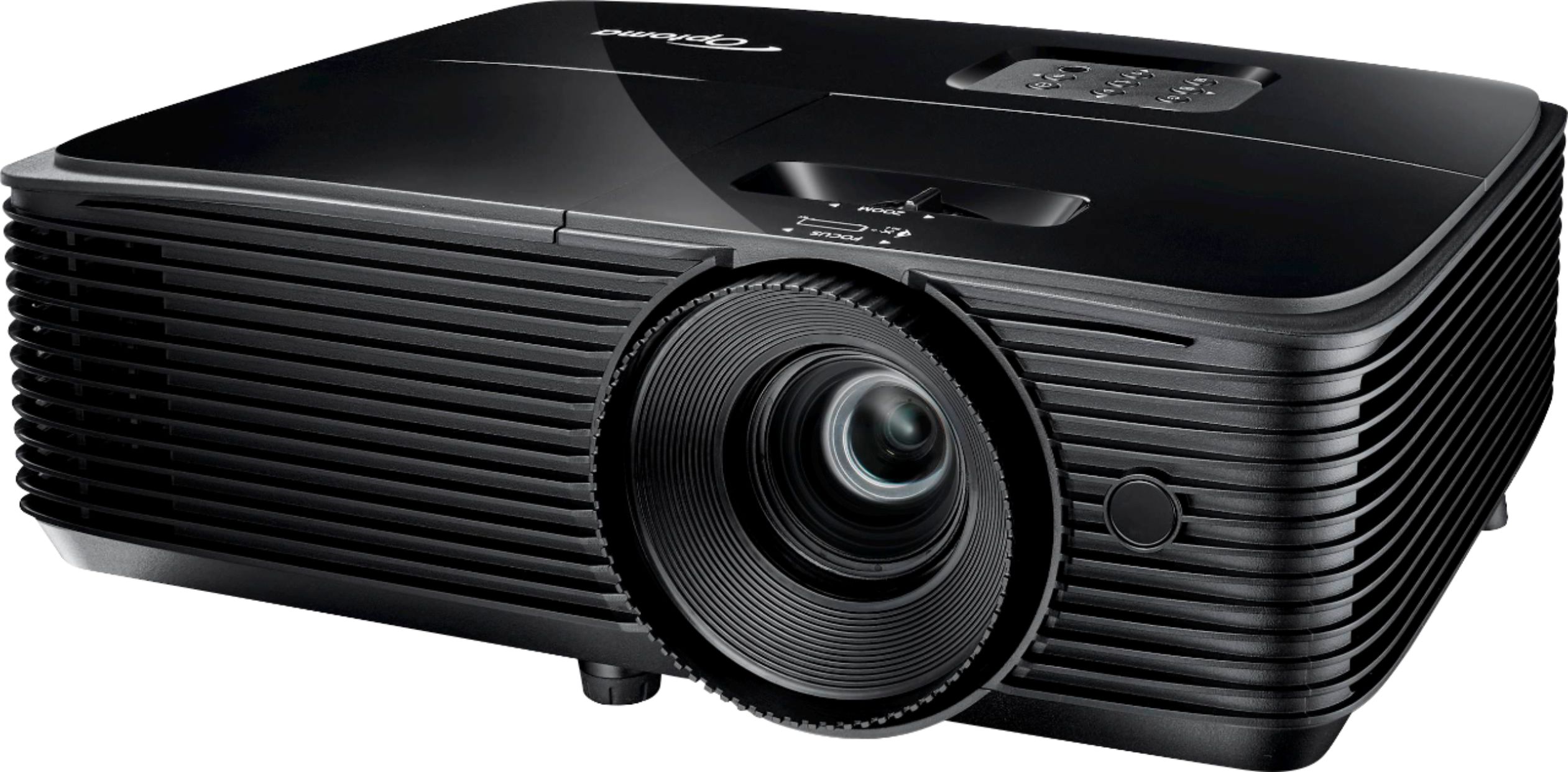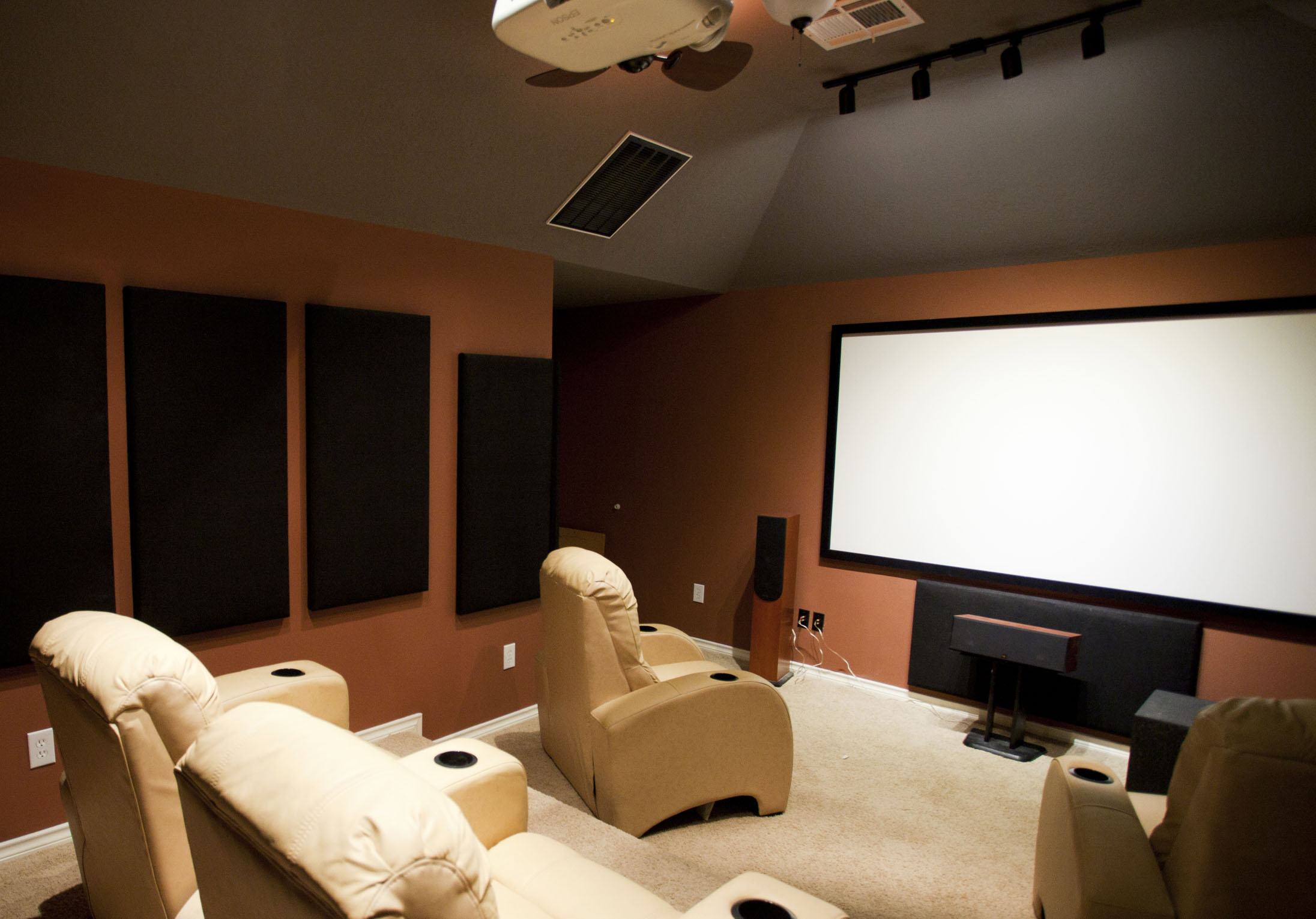Introduction
Welcome to the fascinating world of projectors! Whether you’re a movie lover, a business professional, or a tech enthusiast, projectors have become an indispensable tool for displaying images and videos on a larger scale. From movie theaters to conference rooms, projectors have the ability to transform any space into a captivating visual experience.
But have you ever wondered how projectors work? What are the key components that make them function seamlessly? In this article, we will explore the inner workings of projectors and delve into the science behind them.
Projectors are essentially devices that take an input signal, such as a video or image, and project it onto a surface, typically a screen or wall. The result is a larger-than-life display that can be enjoyed by a group of people. From the mesmerizing colors to the sharp details, projectors have revolutionized the way we consume visual content.
Over the years, projectors have evolved in terms of technology and design. From the early days of bulky CRT projectors to the sleek and portable DLP and LCD projectors of today, the advancements have been remarkable. Understanding how projectors work can help us appreciate the intricacies of these devices and make informed choices when purchasing or using them.
In the following sections, we will dive into the technical aspects of projectors, exploring the various components that enable them to create stunning visuals. We will discuss the role of the lamp, the importance of the lens, and the science behind color creation. Additionally, we will explore different projection technologies and understand how projectors are used in different settings.
So, if you’re curious to learn more about projectors and enhance your understanding of these incredible devices, let’s embark on this enlightening journey together.
How a projector displays images
To understand how a projector displays images, we need to take a look at the key components that work together to create this visual magic. The process begins with the projection source, such as a DVD player, computer, or streaming device, which provides the video or image that will be projected.
Once the projection source sends the signal, it undergoes a series of transformations inside the projector. First, the projector receives the signal and converts it into a digital format. This digital signal is then processed and sent to the imaging elements within the projector.
One of the main imaging technologies used in projectors is Digital Light Processing (DLP). In DLP projectors, the digital image is displayed using a micro mirror device (DMD). The DMD is made up of thousands of tiny mirrors, each corresponding to a pixel on the projected image. These mirrors can tilt towards or away from the light source to create different shades of gray that form the image.
In LCD projectors, liquid crystal displays are used instead. The liquid crystals act as shutters, controlling the amount of light that passes through and creating the different colors and shades of the projected image. The light source passes through the liquid crystal displays, and the image is formed on the projection surface.
Regardless of the imaging technology used, the next crucial component in the projector is the lamp. The lamp provides the light source that illuminates the image and allows it to be projected. The lamp emits a bright, focused beam of light that passes through the imaging elements and is directed towards the projection surface.
Before the light reaches the projection surface, it passes through the projector lens. The lens plays a crucial role in focusing and magnifying the image. By adjusting the lens, the size and clarity of the projected image can be controlled, allowing for flexibility in different viewing environments.
The final step in the process is the projection screen. The projection screen is designed to reflect and diffuse the projected light, resulting in a sharp and vibrant image. The quality and material of the screen can greatly impact the overall viewing experience, ensuring that the projected image is displayed in the best possible way.
In summary, a projector displays images by receiving a signal from a projection source, converting it into a digital format, processing it with imaging technologies, illuminating it with a lamp, focusing it with a lens, and projecting it onto a screen. Understanding this process helps us appreciate the complexity and ingenuity behind the creation of striking visuals.
The components of a projector
Projectors are comprised of several essential components that work together to create the mesmerizing visual experience we associate with them. Understanding these components is key to appreciating the inner workings of a projector.
1. Projection Source: The projection source is where the video or image originates from. It can be a DVD player, computer, gaming console, or any other device that provides the content to be projected.
2. Imaging System: The imaging system is responsible for processing the digital signal received from the projection source and transforming it into a visual image. Depending on the type of projector, this system may consist of imaging technologies such as DLP (Digital Light Processing) or LCD (Liquid Crystal Display).
3. Lamp: The lamp is the light source that illuminates the image and allows it to be projected onto a surface. Most projectors use high-intensity discharge (HID) lamps, which emit a bright and focused beam of light. The lamp’s lifespan can vary, and it is typically replaceable.
4. Lens: The lens is a crucial component that focuses and magnifies the image. It determines the size, clarity, and sharpness of the projected image. The lens can be adjusted to accommodate different projection distances and screen sizes.
5. Color Wheel: The color wheel is a rotating disc made up of different color segments – red, green, blue, and sometimes white. As the wheel spins, it filters the projected light, allowing the projector to display a wide range of colors. The color wheel is an integral part of DLP projectors.
6. Cooling System: Projectors generate heat due to the lamp and other components. To prevent damage and maintain optimal performance, projectors have cooling systems that consist of fans or heat sinks. These systems help dissipate the heat and keep the projector running smoothly.
7. Control Panel: The control panel is where the user interacts with the projector. It typically consists of buttons, switches, and a navigation menu, allowing users to adjust settings, select inputs, and access various features.
8. Connectivity Options: Projectors offer various connectivity options to connect with external devices. Common options include HDMI, VGA, USB, and wireless connectivity, enabling users to connect laptops, smartphones, and other devices seamlessly.
Each of these components plays a crucial role in the overall functioning of a projector. They work in harmony to deliver stunning visuals and ensure an immersive viewing experience.
The role of the lamp in a projector
The lamp is a vital component of a projector, as it provides the necessary light source for projecting images onto a screen or surface. It plays a significant role in determining the brightness, clarity, and overall quality of the projected image.
Lamps used in projectors are typically high-intensity discharge (HID) lamps, which produce a concentrated beam of light. These lamps contain mercury vapor that is excited by an electrical discharge, resulting in the emission of intense light.
One of the key factors to consider when it comes to the lamp is its brightness, measured in lumens. The brightness of the lamp determines how well the projected image will be visible in various lighting conditions. Higher lumens ensure a more vibrant and visible image, making it suitable for larger venues or areas with ambient light.
However, it’s important to note that lamps gradually lose their brightness over time. This is known as lamp decay, and it occurs as the lamp ages and is used for an extended period. As a result, projectors often have a specified lamp life, which indicates the number of hours the lamp is expected to function optimally. Once a lamp reaches the end of its life, it may need to be replaced to maintain optimal image quality.
Another factor to consider is the lamp’s color temperature. The color temperature determines the warmth or coolness of the light emitted by the lamp. Projectors usually have different preset color temperature options, allowing users to adjust the color tone according to their preferences and requirements.
The lamp also contributes to the overall power consumption of the projector. High-intensity lamps require more power, which can lead to higher energy consumption. As a result, lamp manufacturers and projector manufacturers have made efforts to develop more energy-efficient lamps to reduce the environmental impact and operating costs.
It’s essential to handle and maintain the lamp correctly to ensure its longevity and optimal performance. This includes following manufacturer guidelines for lamp replacement, allowing the lamp to cool down before handling it, and keeping the projector’s ventilation system clean to prevent overheating.
In summary, the lamp is a critical component of a projector, providing the light source necessary for projecting images onto a screen. Its brightness, color temperature, and lifespan significantly impact the visual quality and overall performance of the projector. Understanding the role of the lamp can help users make informed decisions when selecting and using projectors for various applications.
Understanding the projector lens
The projector lens is a crucial component that plays a significant role in delivering a clear and focused image. It is responsible for controlling the size, clarity, and sharpness of the projected image. Understanding the functions and features of the projector lens is essential for optimizing the visual experience.
One of the primary functions of the lens is to focus the light coming from the lamp onto the projection surface. By adjusting the distance between the lens and the projection surface, the size of the projected image can be controlled. Moving the lens closer to the surface creates a smaller image, while moving it farther away enlarges the image. This flexibility allows projectors to adapt to different screen sizes and viewing environments.
The lens also provides the ability to adjust the focus of the projected image. By fine-tuning the focus, the details and sharpness of the image can be enhanced. Achieving a crisp focus is crucial for presenting text, graphics, and other fine details accurately. Projectors often have manual focus controls that allow users to adjust the focus according to their preferences and the specific requirements of the content being displayed.
Projector lenses are characterized by their throw ratio, which determines the projection distance in relation to the size of the projected image. A short throw lens has a smaller throw ratio, allowing for a larger image to be projected in a shorter distance. This is useful when space is limited, such as in small conference rooms or home theaters. On the other hand, long throw lenses have a larger throw ratio, enabling a larger image to be projected over a greater distance, making them suitable for larger venues.
In addition to the throw ratio, projector lenses may also have zoom capabilities. Zoom lenses allow for adjusting the image size without physically moving the projector. This feature provides flexibility in various settings where different screen sizes are required, eliminating the need to reposition the entire projector.
Another aspect to consider when it comes to projector lenses is lens shift. Lens shift allows for vertically or horizontally adjusting the position of the projected image without tilting the projector itself. This can be especially useful when the projector needs to be installed off-center or at an angle, ensuring a properly aligned and rectangular image.
When selecting a projector, it’s important to understand the lens specifications and consider the specific needs of the intended use. The throw ratio, zoom capabilities, and lens shift functionalities should align with the desired projection distance, image size, and installation requirements.
By understanding the functions and features of the projector lens, users can optimize the projection setup, achieve the desired image size and focus, and enjoy a visually pleasing experience.
The importance of the color wheel
The color wheel is a critical component in projectors, particularly in those that use DLP (Digital Light Processing) technology. It plays a vital role in creating accurate and vibrant color representations, enhancing the visual quality of the projected images.
The color wheel is a rotating disc containing different color segments, typically red, green, blue, and sometimes white. As the wheel spins, it allows specific colors to pass through at different intervals, synchronizing with the imaging system to display the intended colors in the projected image.
Color accuracy is crucial in projecting realistic and vibrant images. The color wheel ensures that the projected colors are faithfully represented, bringing visual content to life. It achieves this by blending the primary colors, red, green, and blue, in varying intensities to create a wide spectrum of shades and hues.
The color wheel’s speed of rotation is precisely timed to synchronize with the mirror or shutter in the DLP chip. This timing ensures that the correct colors are displayed at the right moment, preventing color distortion or inaccuracies in the projected image. The precise coordination between the color wheel and imaging system is crucial for maintaining accurate color reproduction.
In addition to color accuracy, the color wheel also affects the overall brightness and contrast of the projected image. The timing and design of the color wheel can impact the amount of light passing through the imaging system, affecting the overall brightness and contrast ratio. A well-designed color wheel ensures that the image is not only vibrant and accurate in color, but also maintains optimal brightness and contrast levels.
Projectors often provide various color modes or presets that optimize the color wheel’s performance for different types of content or viewing environments. These presets adjust the color wheel’s rotation timing and intensity to enhance specific color ranges or accommodate different lighting conditions. Users can select the appropriate color mode based on their preferences and the type of content being projected, ensuring optimal color performance.
It is worth noting that advancements in color wheel technology, such as the implementation of RGBRGB or RGBCYM color segments, have allowed for an expanded color gamut and improved color accuracy. These advancements enable projectors to accurately reproduce a wider range of colors, resulting in more lifelike and immersive visuals.
In summary, the color wheel is a vital component in projectors, especially those using DLP technology. It ensures accurate color reproduction, enhances brightness and contrast levels, and contributes to the overall visual quality of the projected image. The proper timing and design of the color wheel are essential for achieving vibrant, realistic, and captivating visuals.
How does the projector create colors?
Projectors have the remarkable ability to display a wide range of colors, bringing visual content to life. But have you ever wondered how projectors create these vibrant and accurate colors? Let’s explore the process behind color creation in projectors.
One of the common methods used in projectors is the combination of primary colors – red, green, and blue – to create a full spectrum of colors. This process is known as additive color mixing.
Inside the projector, three separate imaging elements or panels are responsible for displaying the primary colors. Each panel is dedicated to one primary color – red, green, or blue – and works in conjunction with the color wheel or filters to create the desired colors in the projected image.
Here’s how it works:
- Red: The red component of the image is displayed by the red imaging element or panel. The light passes through or reflects off a red filter or the red segment of the color wheel. This allows red light to be projected onto the surface, contributing to the overall color composition.
- Green: Similarly, the green imaging element or panel displays the green component of the image. Green light is produced by passing through a green filter or the green segment of the color wheel, adding green hues to the projected image.
- Blue: The blue imaging element or panel displays the blue component of the image. Blue light is created by passing through a blue filter or the blue segment of the color wheel, contributing to the blue tones in the projected image.
By individually controlling the intensity of each primary color, projectors can create various shades and hues. By combining different proportions of red, green, and blue light, a multitude of colors can be achieved. This process, called color mixing, allows projectors to accurately reproduce a full range of colors, including secondary and tertiary colors.
It is important to note that while the primary colors are displayed individually, our eyes perceive them as blended colors due to the rapid succession of images and the persistence of vision. This creates the illusion of full-color images.
Advancements in projector technology have also allowed for improved color reproduction and wider color gamuts. Some projectors now utilize additional color filters or imaging elements, such as RGBRGB or RGBCYM, to enhance color accuracy and expand the color palette even further.
Ultimately, the combination of primary colors, precise control of their intensities, and synchronized timing with the color wheel or filters enables projectors to create vibrant and lifelike colors in the projected images, captivating audiences and enhancing the visual experience.
The role of the projection screen
The projection screen is a crucial component in the overall projection system, playing a significant role in delivering high-quality and visually appealing images. Its purpose is to reflect and diffuse the projected light, ensuring that the image is displayed in the best possible way. Let’s explore the role of the projection screen and its importance in creating an immersive viewing experience.
One of the primary functions of the projection screen is to enhance the brightness and contrast of the projected image. The screen is designed to reflect the projected light uniformly, ensuring that the image appears bright and crisp from various viewing angles. It helps maximize the perceived brightness, allowing for a more vivid and impactful visual display.
The material used in the construction of the projection screen plays a crucial role in its performance. Different screen materials have varying properties, such as gain and viewing angle. Gain refers to the screen’s ability to reflect light, with higher gain screens amplifying the brightness of the projected image. The viewing angle determines the optimal range of viewing positions for the audience to experience a clear and vibrant image.
Additionally, the projection screen also serves to improve the image’s color accuracy and uniformity. A high-quality screen ensures that colors are displayed accurately, without any distortion or color shifts. It helps maintain a consistent color temperature and color saturation, resulting in a more immersive and true-to-life visual experience.
Furthermore, the projection screen helps to eliminate or minimize issues such as hotspots and ambient light interference. Hotspots occur when the center of the projected image appears significantly brighter than the edges. A quality projection screen reduces this effect, distributing the light evenly across the surface, resulting in a uniform illumination. It also aids in minimizing the impact of ambient light, allowing for a clearer image in well-lit environments.
The size and aspect ratio of the projection screen are also important considerations. The screen size generally depends on the viewing distance and the desired impact of the projected image. The aspect ratio should match the content being projected, whether it is for movies, presentations, or other specific purposes. The correct screen size and aspect ratio ensure that the image fills the screen appropriately, minimizing any cropping or distortion.
Ultimately, the projection screen acts as a canvas for visual content, enhancing the viewing experience and ensuring that the projected image is displayed optimally. A well-designed and properly installed screen complements the capabilities of the projector, resulting in a captivating and immersive visual display that engages and captivates the audience.
Decoding the projector’s resolution
The resolution of a projector is a crucial factor that determines the level of detail and clarity in the projected image. It refers to the number of pixels used to create the image and plays a significant role in the overall visual quality. Understanding the projector’s resolution is essential when selecting a projector or assessing its suitability for specific applications.
Resolution is typically expressed as the number of pixels in width and height, such as 1920×1080 (Full HD) or 3840×2160 (4K Ultra HD). The higher the resolution, the greater the number of pixels, resulting in a sharper and more detailed image. Higher resolution projectors are desirable for applications where fine details and intricate visuals are essential, such as professional presentations, movie screenings, or gaming.
Common resolutions found in projectors include:
- SVGA (800×600): SVGA is the entry-level resolution for projectors. While it provides basic image quality, it may lack the sharpness and detail required for detailed content.
- XGA (1024×768): XGA offers improved resolution, suitable for general presentations and basic multimedia content.
- WXGA (1280×800): WXGA is a widescreen resolution that provides a better display for widescreen laptops and HD content.
- Full HD (1920×1080): Full HD is widely adopted as a standard resolution for projectors. It offers excellent detail and clarity, making it suitable for home theaters, gaming, and professional presentations.
- 4K Ultra HD (3840×2160): 4K Ultra HD projectors provide the highest resolution available, delivering stunning visual quality. They are ideal for applications requiring the utmost detail, such as detailed design work, professional photography, or high-end home theater setups.
It’s essential to consider the resolution requirements of the content you plan to project. Higher resolution projectors are better suited for displaying high-definition videos, intricate graphics, and detailed text, ensuring a more immersive and engaging visual experience. However, for basic presentations or simple content, a lower resolution projector may suffice, providing a cost-effective solution for your needs.
It’s worth noting that the resolution of the source material being projected should match or exceed the native resolution of the projector to ensure optimal image quality. Scaling from a lower resolution to a higher resolution may result in a loss of detail and clarity.
In summary, the resolution of a projector determines the level of detail and clarity in the projected image. Higher resolution projectors offer sharper and more detailed visuals, while lower resolution projectors may be suitable for basic presentations or content. Understanding the projector’s resolution and matching it with the needs of the intended application ensures an optimal visual experience.
Exploring different projection technologies
Projectors utilize various technologies to display images and videos, each with its own advantages and considerations. Understanding the different projection technologies can help users make informed decisions when selecting a projector for their specific needs. Let’s explore some of the most common projection technologies:
1. LCD (Liquid Crystal Display): LCD projectors use liquid crystal panels to project images. The light from the lamp passes through the liquid crystal panels, which act as shutters to control the amount of light and create the image. LCD projectors offer good color accuracy, high brightness, and are less prone to image burn-in. They are suitable for presentations, classrooms, and home theater setups.
2. DLP (Digital Light Processing): DLP projectors employ microscopic mirrors on a digital micro mirror device (DMD). The mirrors tilt to reflect light or stay flat to block it, creating the image. DLP projectors offer high contrast, fast response times, and minimal pixelation. They are commonly used in home theaters, entertainment venues, and professional applications.
3. LCoS (Liquid Crystal on Silicon): LCoS projectors use liquid crystals on a reflective silicon chip to project images. LCoS combines the benefits of both LCD and DLP technologies, offering excellent color reproduction, high contrast ratios, and minimal screen door effect. LCoS projectors are often found in high-end home theaters and professional applications.
4. LED (Light Emitting Diode): LED projectors utilize LED light sources instead of traditional lamps. LEDs offer a longer lifespan, lower power consumption, and instant on/off capabilities. LED projectors are typically more compact, portable, and energy-efficient. They are commonly used for mobile presentations, small classrooms, and home entertainment systems.
5. Laser Projection: Laser projectors use laser light sources instead of lamps or LEDs. Laser projectors offer advantages such as long lifespan, consistent brightness, wide color gamut, and quick on/off capabilities. They are commonly found in large venues, cinemas, and high-end installations where high brightness and color accuracy are required.
Each projection technology has its own set of strengths and considerations, catering to different applications and preferences. When selecting a projector, factors such as image quality, brightness, portability, and cost should all be taken into account. Additionally, it’s important to consider specific requirements, such as the desired screen size, ambient lighting conditions, and the intended usage environment.
By exploring and understanding these different projection technologies, users can select the most suitable projector that meets their specific needs, ensuring an optimal viewing experience and satisfaction with their investment.
The role of the projector in different settings
Projectors play a versatile role in various settings, enhancing presentations, entertainment experiences, and communication in unique ways. Understanding the different roles projectors serve in various settings can help us appreciate their adaptability and versatility. Let’s explore some common settings and the role projectors play in each:
1. Education: In educational settings, projectors are used to facilitate interactive learning experiences. Teachers and instructors can display visual aids, slideshows, and educational videos, making the content more engaging and easily accessible to students. Projectors enable classroom-wide visibility, encouraging collaboration and participation among students.
2. Business and Presentations: Projectors are integral to business settings, enabling effective presentations and meetings. They allow professionals to share data, graphs, charts, and multimedia content with large groups of colleagues or clients. Projectors with wireless connectivity and screen-sharing capabilities further enhance collaboration and remote presentations.
3. Home Theater: Projectors are popular in home theater setups, where they create an immersive cinematic experience. They allow individuals to enjoy movies, TV shows, and sports on a larger screen, providing a more captivating and theater-like atmosphere. Home theater projectors offer high image quality, vibrant colors, and flexibility in screen size and aspect ratios.
4. Entertainment Venues: Projectors are widely used in entertainment venues such as cinemas, theaters, and live event spaces. They project movies, stage performances, and visual effects onto large screens or surfaces, enriching the audience’s experience. High-brightness projectors are favored to ensure optimal visibility even in the presence of ambient lighting.
5. Digital Signage and Advertising: Projectors are employed in digital signage and advertising to attract attention and communicate messages effectively. Whether used in storefront displays, exhibitions, or large-scale installations, projectors offer the ability to project high-impact, dynamic visuals onto unconventional surfaces, engaging viewers and enhancing brand visibility.
6. Museums and Art Galleries: Projectors are utilized in museums and art galleries to showcase artwork and create immersive exhibitions. They provide a means to project high-resolution images, videos, and animations, bringing art and artifacts to life. Projectors enable curators to create interactive and visually stunning experiences for visitors.
7. Hospitality and Events: Projectors are essential for hosting events, conferences, and large-scale gatherings. They allow for presentations, live streaming, and displaying event information on big screens, ensuring that information is easily visible to participants. Projectors in hospitality settings also enable personalized guest experiences through interactive displays and digital signage.
These are just a few examples highlighting the varied roles projectors play in different settings. They contribute to effective communication, engaging experiences, and visually stimulating environments. By understanding these roles, we can appreciate how projectors have become essential tools in many industries, enhancing the way we learn, entertain, and communicate.
Conclusion
The world of projectors is a fascinating one, with various components and technologies working together seamlessly to deliver captivating visuals. From understanding how projectors display images to exploring the role of the lamp, lens, color wheel, and projection screen, we have delved into the intricacies of these devices.
Projectors have become indispensable in numerous settings, including education, business, home theaters, entertainment venues, digital signage, museums, and hospitality. They enhance presentations, facilitate interactive learning, create immersive cinematic experiences, and communicate messages effectively.
By exploring different projection technologies, we have seen how LCD, DLP, LCoS, LED, and laser projectors offer unique advantages and considerations, catering to specific needs and applications.
Understanding resolution is essential in selecting the right projector, as it determines the level of detail and clarity in the projected image. Whether it is SVGA, Full HD, 4K Ultra HD, or other variations, resolution directly affects the visual quality of the projected content.
We have also examined the importance of various components such as the lamp, lens, color wheel, and projection screen in the overall performance of projectors. Each component plays a critical role in delivering outstanding visuals to captivate audiences.
Overall, projectors have revolutionized the way we consume visual content, providing us with larger-than-life images and immersive experiences. They continue to evolve, bringing advancements in technology, higher resolutions, and innovative features, expanding the possibilities for their use in different settings.
As technology advances, we can expect projectors to become even more versatile and capable, enhancing the visual experiences in education, business, entertainment, and many other domains. Whether you’re presenting in a boardroom, enjoying a movie at home, or exploring an art gallery exhibition, projectors continue to make a significant impact on how we experience and interact with visual content.







